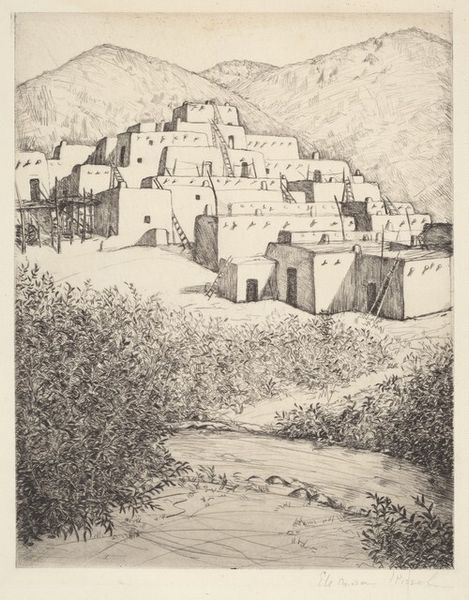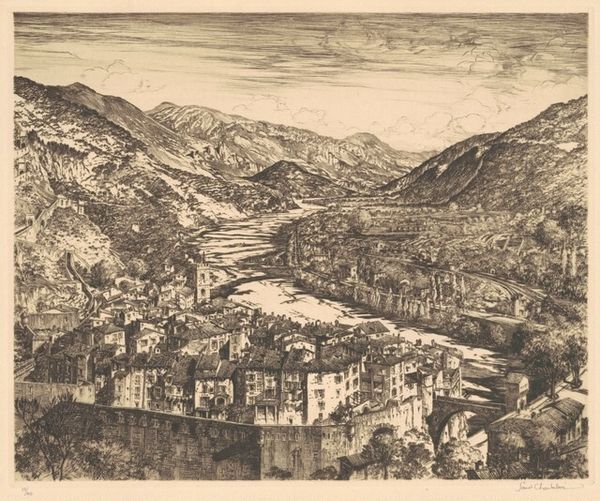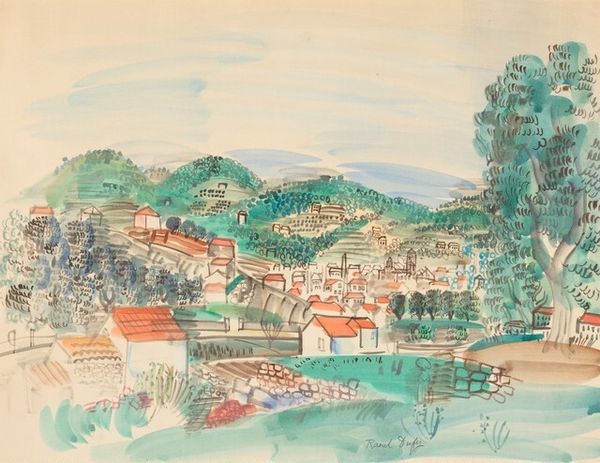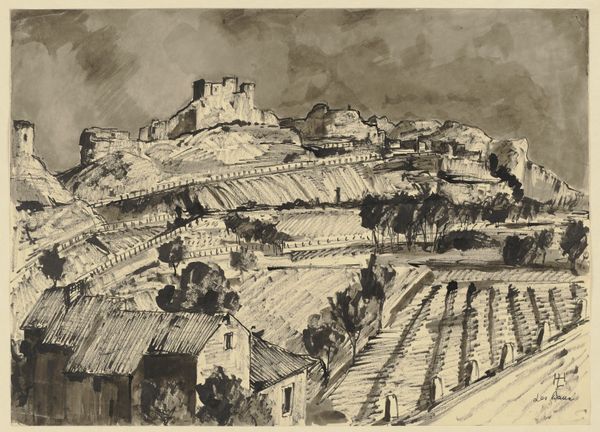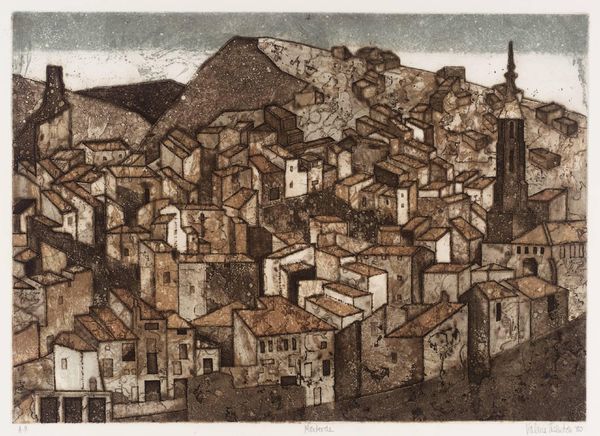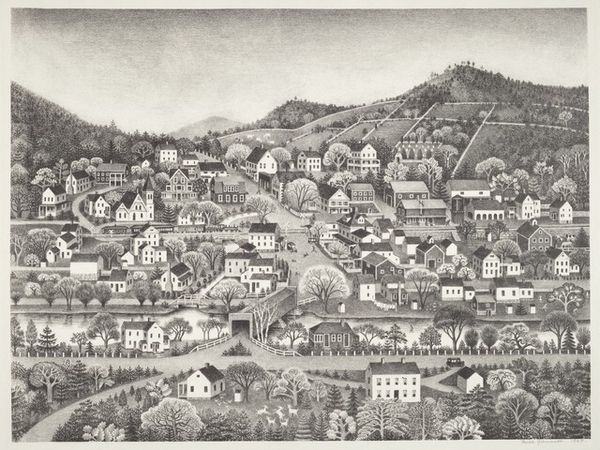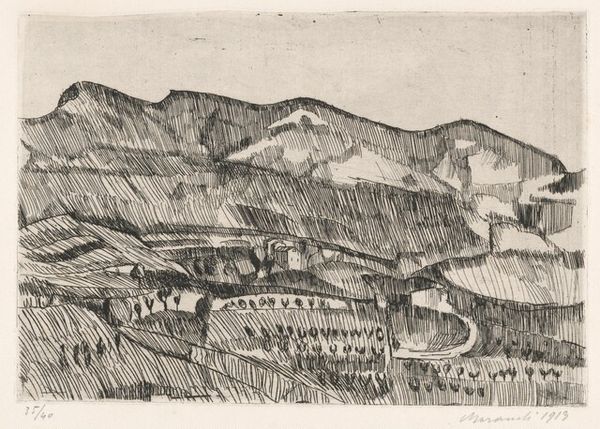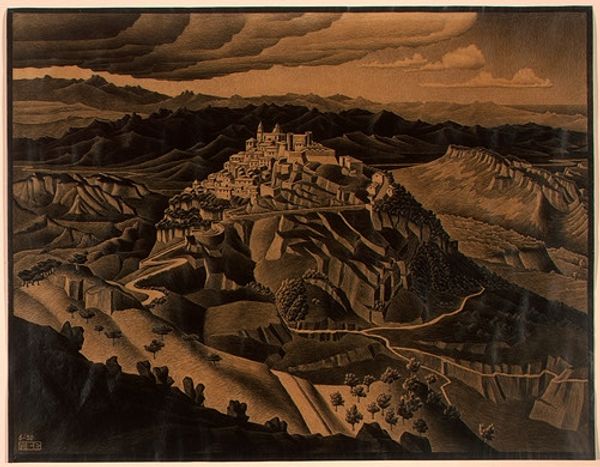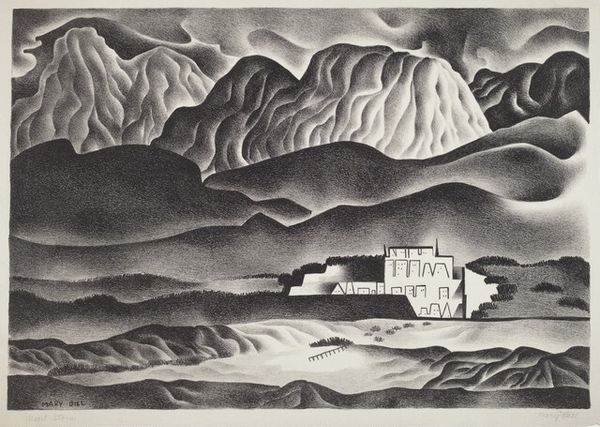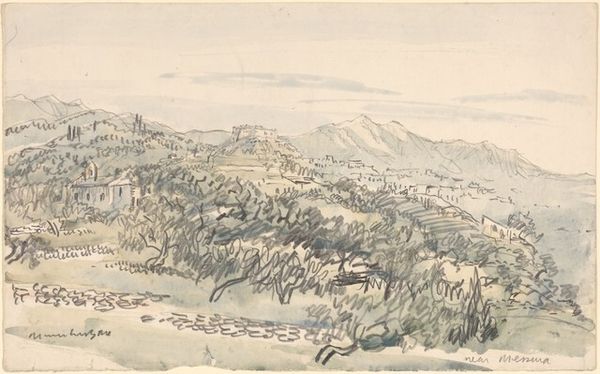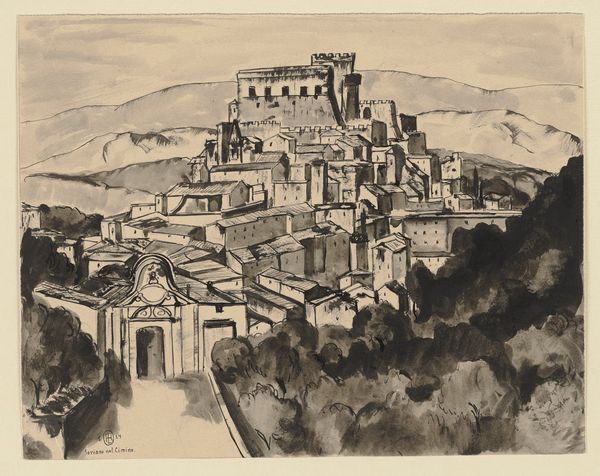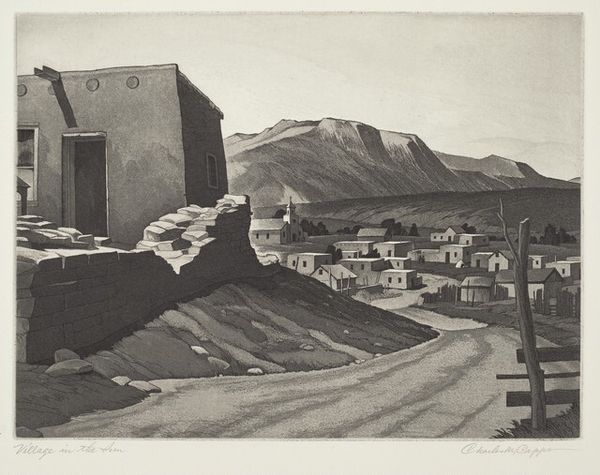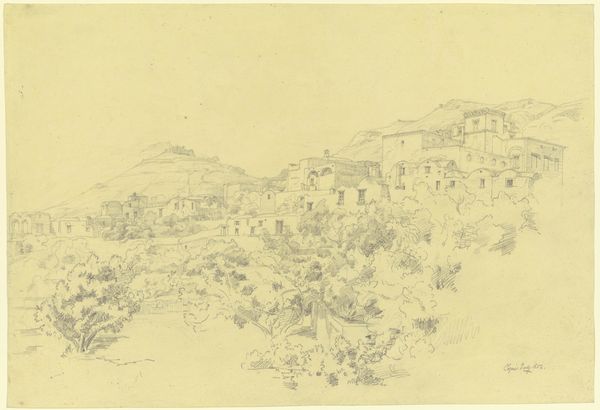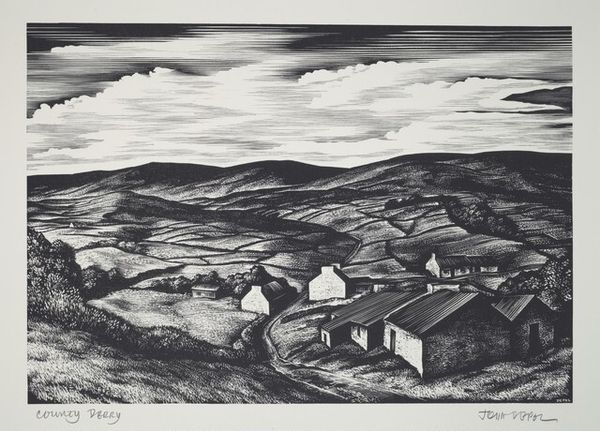
drawing, print, paper, graphite
#
drawing
# print
#
landscape
#
paper
#
pencil drawing
#
graphite
#
cityscape
#
realism
Dimensions: Image: 234 x 314 mm Sheet: 290 x 402 mm
Copyright: National Gallery of Art: CC0 1.0
Editor: So, this is "Cagnes Sur Mer" by José Pavón, made in 1940. It's a print, primarily graphite on paper. I’m struck by how meticulously the landscape is rendered. It feels almost… timeless, despite being made during such a turbulent period. What symbolic layers might be hidden in plain sight here? Curator: Timeless is an apt description. Observe how the village perches atop the hill, almost like a medieval fortification – a testament to communal resilience. Then, contrast that with the delicate tracery of the bare trees in the foreground, evoking a sense of vulnerability. Does the artist present a commentary on enduring civilization set against the fragility of existence? Editor: I see what you mean. The starkness of the trees, without their leaves, does feel melancholic, a symbol of the changing seasons and perhaps the hardships of life in 1940. The village becomes a beacon of stability. But isn't there also a sense of idyllic escape in landscape art generally? Curator: Indeed. Landscape, traditionally, served as a vehicle for national identity. Think of the Hudson River School in America, celebrating the vastness and potential of the New World. But in 1940, a European landscape also operates as a sanctuary, an idealized refuge, perhaps unconsciously referencing the weight of the impending World War. Notice how the artist frames the scene. What emotion does this incite? Editor: It's interesting you point out the framing, as if we are looking onto a stage. Maybe Pavón sought to distance himself, observing this beautiful place even as the world around him was collapsing. This adds a certain sense of yearning, or perhaps cautious optimism. Curator: Exactly. Through simple graphite lines, Pavón seems to crystallize collective anxieties and hope, revealing that even in times of upheaval, our visual memory of home and heritage can offer solace. It makes you wonder about the persistence of place. Editor: I’ve never thought about landscape in that context before. So, it’s not just a pretty picture, but a complex symbol. Curator: Precisely. It’s about decoding the visual language that reminds us who we are, particularly when our identities are challenged.
Comments
No comments
Be the first to comment and join the conversation on the ultimate creative platform.
